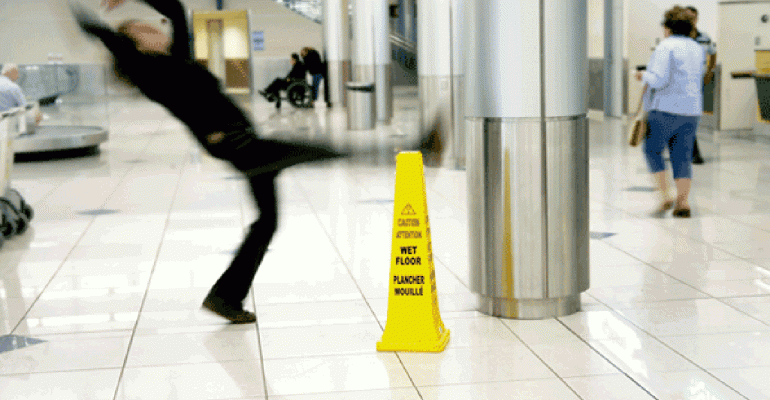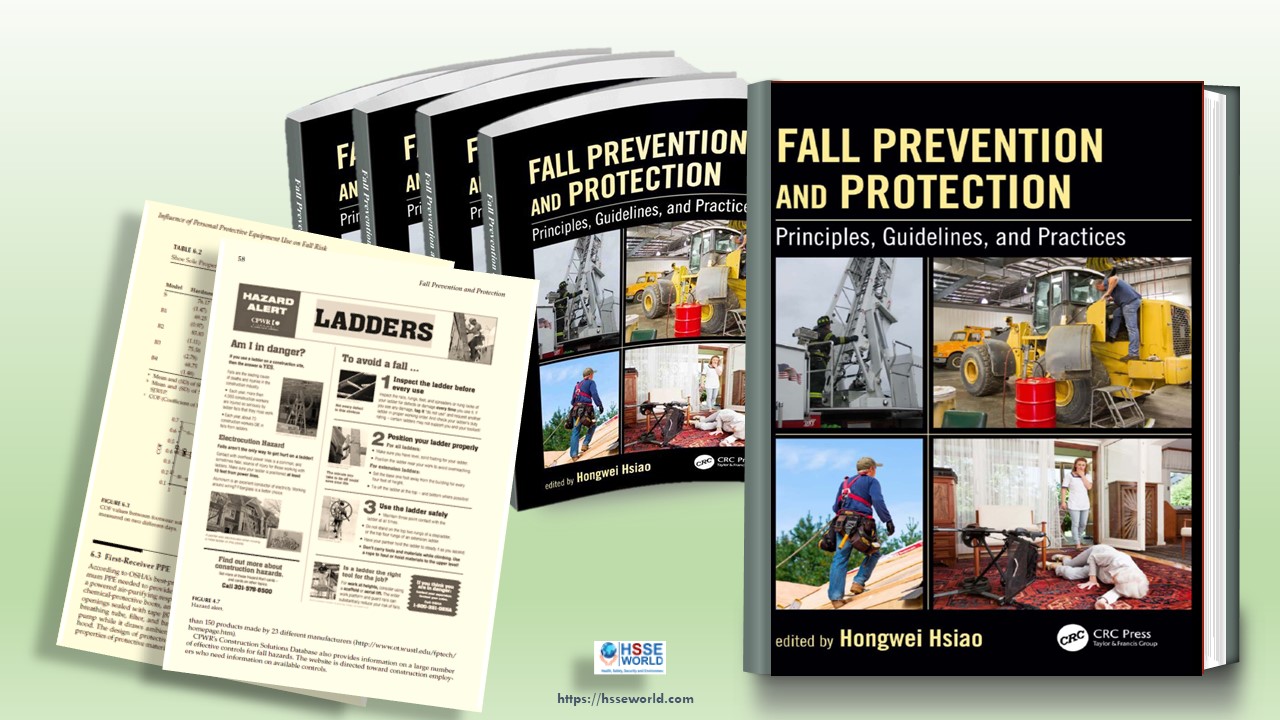One way to reduce injury-causing slips and falls is to pay attention to what’s on the floor of the workplace.Workplace injuries cost American businesses. Between lost work hours, injury claims and other expenses, U.S. employers lost nearly $62 billion in costs stemming from injuries and accidents that resulted in employees missing six or more days of work. According to the U.S. Department of Labor, private industry employers reported nearly 2.8 million nonfatal workplace injuries.

One way to limit the chances of workplace injuries is by paying attention to what’s on your floor. The use of strategically placed floor mats and other related products can provide several safety benefits. Here are six ways that floor mats and other matting solutions can make a workspace a safer place.
1. Floor Mats Help Prevent Slips and Trips
Slip-and-trip incidents are one of the most common types of injuries in the country and account for $2.35 billion in business costs alone, but businesses often employ improper strategies to prevent these incidents. As safety management author F. David Pierce wrote in EHS Today this year, the following four paradigms have held businesses back from limiting slips and trip injuries:
- Personal awareness is primary to prevention.
- Look to shoes first for preventing slip injuries.
- Using signage is an effective preventative strategy.
- Preventing slip-and-trip injuries is easy.
One way to help prevent slips and trips is by adding safety matting that can keep workers upright and safe. Dry and wet-area floor mats can be made with beveled edges and special tread patterns that provide sure footing. This additional traction reduces the risk of slips and trips in heavy traffic areas where accidents normally occur. Individual mats provide each person a safe, slip-free space to work, while runner mats offer additional traction for walkways, aisles and other longer spaces.
2. Floor Mats Can be Made with Drainage Capabilities for Spills
A leaking pipe or an accidental spill can create a dangerous work environment. Wet or slippery surfaces are one of the three major contributors to slip, trip and fall injuries, and unexpected puddles or spills can turn a once-safe space into a hazardous area. If spills are a normal occurrence in your workplace, you can invest in special wet area floor mats designed with drainage capabilities.
These mats can be made with chemical- and grease-resistant rubber and allow water, oil and other slippery substances to drain through to the ground. This means that workers still can safely move on the mats until they can clean up the mess.
3. Anti-Fatigue Mats Provide Comfort and Support
Standing around is harder work than you may think. A study published in the U.S. National Library of Medicine found ample evidence that prolonged standing at work leads to the following health issues:
- Lower back and leg pain
- Cardiovascular problems
- Fatigue
- Discomfort
- Pregnancy-related health outcomes
Supportive anti-fatigue mats can offer workers extra support to minimize the effects of prolonged standing. These mats provide a layer of cushion that reduces the amount of stress placed on the body while standing, reducing overall wear and tear that contribute to everything from nagging injuries to serious injuries that result in long periods away from work.
4. Floor Mats and Tape Improve Visibility
A poorly lit walkway or stairwell can lead to workers missing a step or veering into a slippery floor. If lighting is an issue, high-visibility floor mats and anti-slip tapes can help guide workers to where they can walk safely.
According to U.S. Access Board Research, the most visually detectable color surface is safety yellow. Strategically-placed high-visibility floor mats allow people to easily see where it is safe to stand and work.
When it comes to stairs, all it takes is a misplaced step to start a dangerous fall. High-visibility anti-slip tape allows you to clearly mark the edges of each step. This makes each step more visible and provides additional traction for anyone going up or down the stairs.
5. Floor Mats Mark Areas of Importance
Another benefit of safety matting is that they can be used to identify both safe and dangerous locations. In case of an emergency, workers need to know where they can go. Safety mats can be used to mark safe spaces or important safety areas, such as placing a high-visibility cushion tile underneath an eyewash station. Mats also can be customized to display messages, such as “Caution,” to note where workers should take extra care.
6. Floor Mats Can Reduce Chances of Static Discharges
Static electricity can cause more than just minor discomfort. OSHA notes https://www.redvector.com/extra/OSHA_safety/FactSheets/fact_sheet_02-V2.pdf] that “static electricity can build up and discharge to an object with very serious consequences,” potentially leaving workers in a dangerous situation.
Electrostatic discharges can cause everything from painful shocks to electrical fires, but anti-static floor mats can help protect workspaces from these dangers. This style of mat is made with insulated materials that inhibit static buildup and potential electrical charges. Special grounding cords can also be added to divert electricity away from workers and sensitive equipment.
With the right floor mats and other matting solutions, you can help prevent everyday slips, trips and falls that can end up hurting employees.



